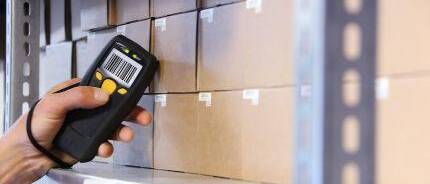Data encoding is primarily used to store, transport, and automatically read data with the highest possible speed and reliability. The automatic readability of codes is a basic requirement for smooth transport and storage operations.
The message of an automatically readable destination address is represented in numbers, for example. However, these numbers are not usually decimal numbers (plain text), because the ten digits of the decimal system cannot be easily expressed by technical means.
The binary code
In data processing, it is easiest when only two states need to be distinguished. In human-readable form, these states are designated by the digits “0” and “1.” These two characters used for representation are called binary characters. Codes that consist of binary characters, i.e., only two different characters, are called binary codes.
A type of binary code frequently used in intralogistics is BCD code (binary coded decimals), also known as dual code. The most common BCD code is the 8-4-2-1 code, which takes its name from the place values of a four-digit dual number. A binary digit is also called a bit (bit is a contraction of “binary digit”). The 8-4-2-1 code is a 4-bit code. In a 1-bit code, there are exactly 21 code words, and in an n-bit code, there are exactly 2n code words. To encrypt 52 targets, a 6-bit code with 26 = 64 possible targets is therefore required, in which 12 code words are not used or are available as additional reserves.
For more information on binary code, see The barcode.
Image source: © Benjamin Haas – Fotolia.com
